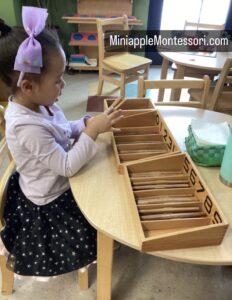
Children are naturally curious. From the moment they are born, they begin to explore the world through their senses. As they grow, their ability to understand and interact with their surroundings develops rapidly.
A significant part of this development can be attributed to the diverse ways they learn, also known as multimodal learning. Let’s dive into how this approach, when integrated into early childhood education, can be transformative.
Boosting Cognitive Growth
Multimodal learning isn’t just about using different tools or activities; it’s about accessing different parts of the brain. When children engage with a topic in multiple ways – say, reading about it, discussing it, and then physically interacting with it – they form stronger and more diverse neural connections.
For instance, while reading about shapes can provide basic knowledge, creating those shapes with playdough or clay adds a tactile dimension to the learning. This hands-on approach enhances their understanding and retention. It’s like building a web of interconnected information in their minds, making it easier to retrieve and apply in various contexts.
Enhancing Social Skills
Social interactions form a core part of the multimodal learning experience. Group activities, discussions, and collaborative projects promote interpersonal skills. Children learn to communicate, take turns, lead, and even resolve conflicts.
More than that, they get exposure to multiple perspectives. When a child hears a classmate explain something in a different way or sees them solve a problem using another method, it broadens their understanding. It also fosters empathy as they begin to appreciate the uniqueness of each individual’s thought process and approach.
Nurturing Emotional Development
Emotions play a pivotal role in how children learn. A child who’s excited or curious about a subject will naturally be more engaged and receptive. On the other hand, if they find something challenging or frustrating, their emotional response can become a barrier.
With multimodal learning, educators can address this by offering varied experiences. If a child struggles with reading about a concept, maybe a song or a hands-on activity can make it clearer and less intimidating. This not only ensures that learning continues but also builds resilience and adaptability in children. They understand that there’s always another way to approach a problem or topic.
Cultivating Creativity and Critical Thinking
Diverse learning experiences inevitably lead to creative thinking. Children begin to think outside the box, applying what they’ve learned in one context to another. For example, a rhythm learned in a music class might help them remember a math sequence.
Furthermore, when faced with various ways to explore a topic, children also develop the ability to critically evaluate which method works best for them. They start understanding their strengths and preferences, laying the foundation for self-directed learning in the future.
Promoting Flexibility and Adaptability
In today’s rapidly changing world, the ability to adapt is paramount. Multimodal learning inherently cultivates flexibility in children. By exposing them to various ways of understanding and interacting with information, they become accustomed to shifting perspectives and methodologies.
For instance, a child who’s used to learning through visuals and is suddenly introduced to auditory methods might initially find it challenging. However, with time and exposure, they learn to adjust and even appreciate the different modes. This adaptability goes beyond just learning; it sets the stage for them to navigate future challenges, whether in education or life in general.
Embracing a Brighter Future with Multimodal Learning
The potential of multimodal learning in shaping young minds is vast. It acknowledges the uniqueness of each child, ensuring that no one is left behind because of a one-size-fits-all approach. If you’re keen to explore how our school incorporates multimodal learning, reach out to Miniapple International Montessori School and give your child the gift of holistic.

